

INTRODUCTION
It is a common fact that we find a wide variety of construction machines on every construction sites, which make the construction jobs easy, safe and quicker.
Depending on the application, construction machines a r e
| classified | into | various | categories | which | we | are |
| discussing | here. |
-
A – Earth moving equipments
-
B – Construction vehicles
-
C – Material handling equipments
-
D – Construction equipment’s
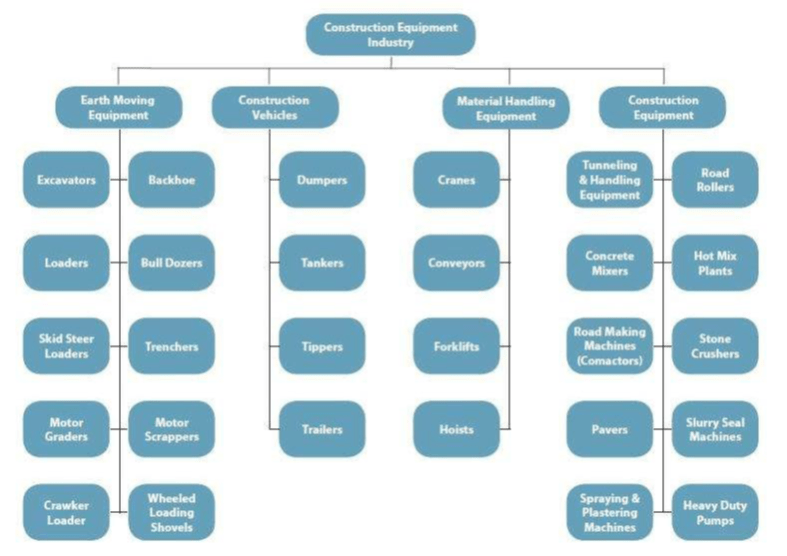
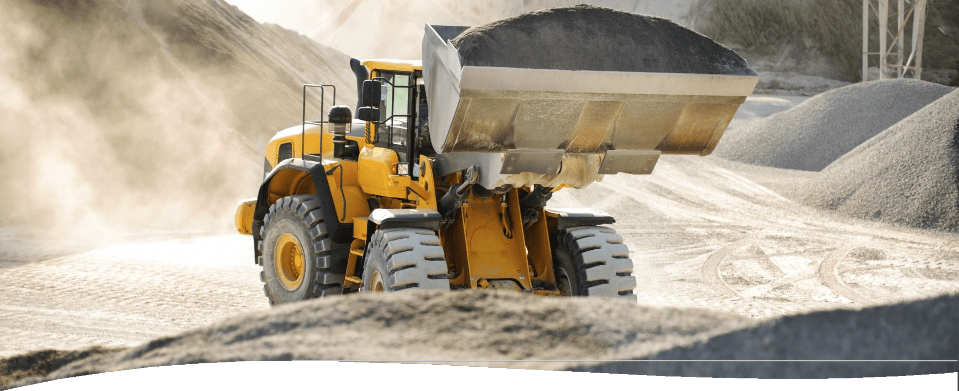
GROUP A : EARTHMOVING EQUIPMENTS
Earthmoving equipment is used in the construction industry to :
- shift large amounts of earth,
- dig foundations and landscape areas.
Types of earthmoving equipment include hydraulic excavators, bulldozers, compressors and loaders.
A1 :EXCAVATORS
 Excavators are heavy construction equipment consisting of a boom, stick, bucket and cab on a rotating platform (known as the “house”).
Excavators are heavy construction equipment consisting of a boom, stick, bucket and cab on a rotating platform (known as the “house”).
 The house sits atop an undercarriage with tracks or wheels.
The house sits atop an undercarriage with tracks or wheels.
 Excavators are also called diggers
Excavators are also called diggers
 Excavators are used in many ways:
Excavators are used in many ways:  Digging of trenches, holes, foundations
Digging of trenches, holes, foundations  Material handling
Material handling
 Brush cutting with hydraulic attachments
Brush cutting with hydraulic attachments  Forestry work
Forestry work
 Demolition
Demolition
 General grading/landscaping
General grading/landscaping
 Heavy lift, e.g. lifting and placing of pipes
Heavy lift, e.g. lifting and placing of pipes
 Mining, especially, but not only open-pit mining
Mining, especially, but not only open-pit mining  River dredging
River dredging
 Driving piles, in conjunction with a pile driver
Driving piles, in conjunction with a pile driver
Al :EXCAVATORS
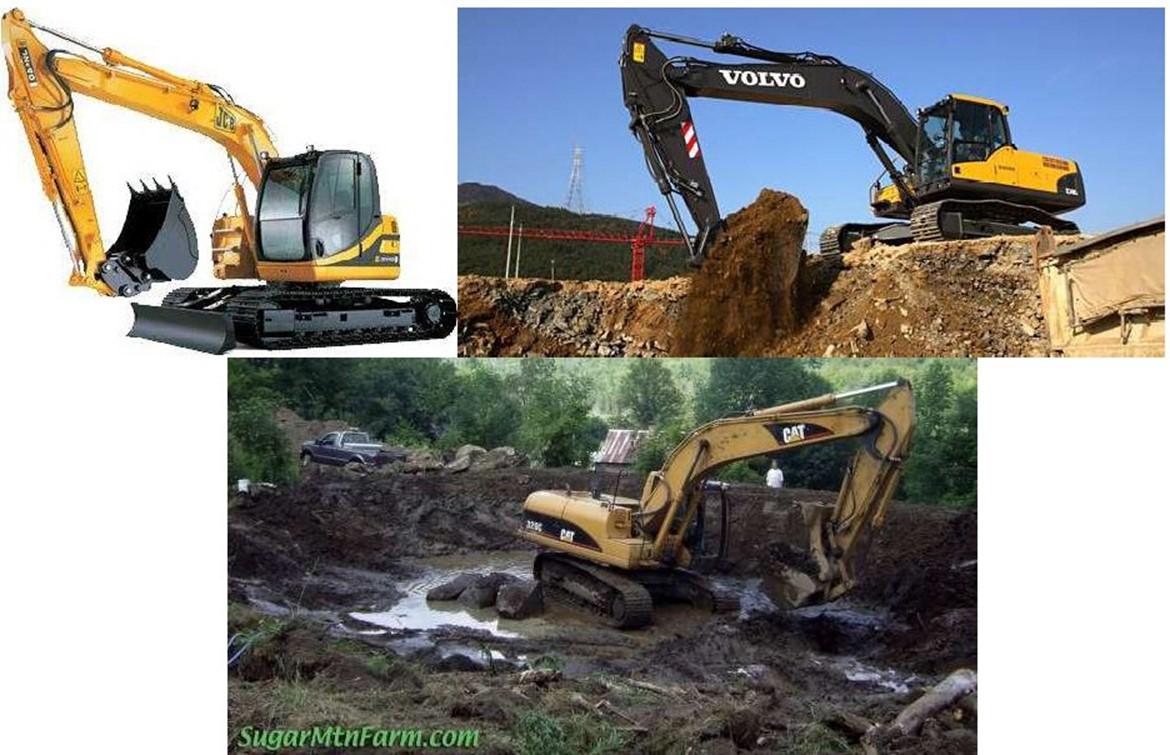
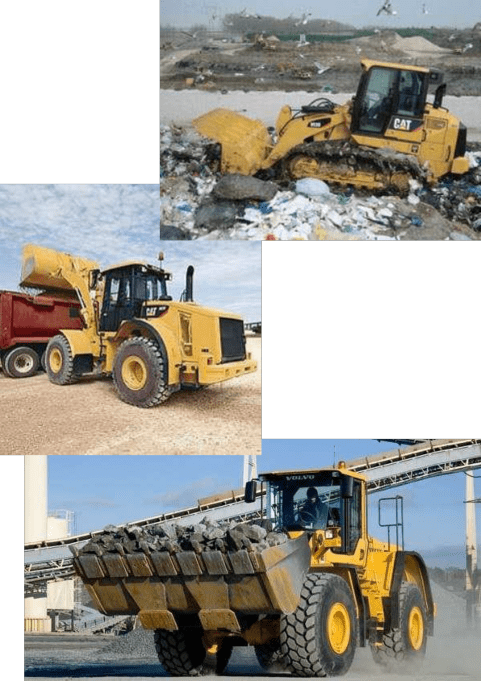
A2 :LOADERS
A loader is a heavy equipment machine often used in construction, primarily used to Load material (such as asphalt, demolition debris, dirt, snow, feed, gravel, logs, raw minerals, recycled material, rock, sand, and woodchips) into or onto another type of machinery (such as a dump truck, conveyor belt, feed- hopper, or railcar).
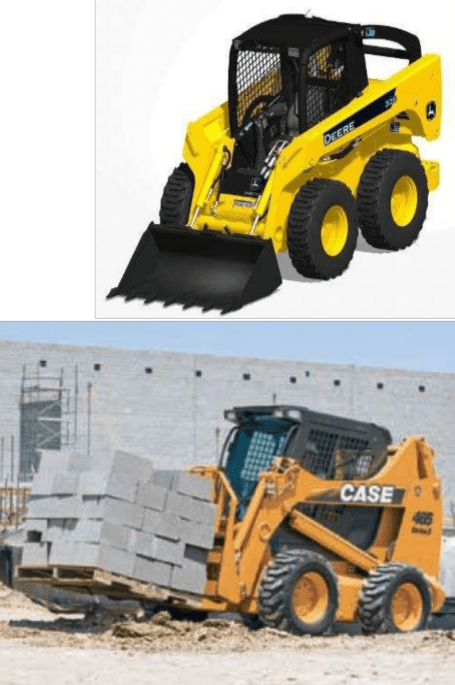
A3 :SKID STEERLOADERS
A skid loader or skid-steer loader is a small rigid frame, engine-powered machine with lift arms used to attach a wide variety of labor-saving tools or attachments.
 Though sometimes they are equipped with tracks, skid- steer loaders are typically four-wheel vehicles with the wheels mechanically locked in synchronization on each side, and the left-side drive wheels can be driven independently of the right- side drive wheels.
Though sometimes they are equipped with tracks, skid- steer loaders are typically four-wheel vehicles with the wheels mechanically locked in synchronization on each side, and the left-side drive wheels can be driven independently of the right- side drive wheels.
A4 :GRADERS
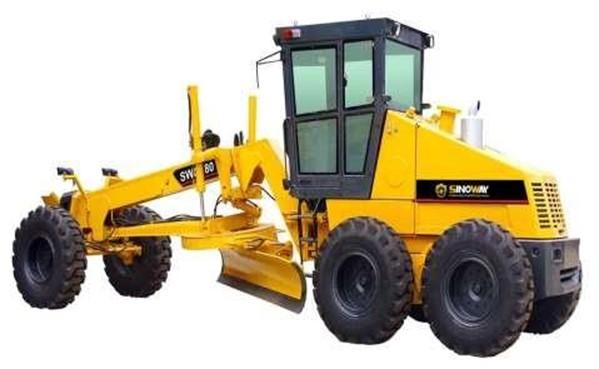
 A grader, also commonly referred to as a road grader, a blade, a maintainer, or a motor grader, is a construction machine with a long blade used to create a flat surface.
A grader, also commonly referred to as a road grader, a blade, a maintainer, or a motor grader, is a construction machine with a long blade used to create a flat surface.
Typical models have three axles, with the engine and cab situated above the rear axles at one end of the vehicle and a third axle at the front end of the vehicle, with the blade in between.
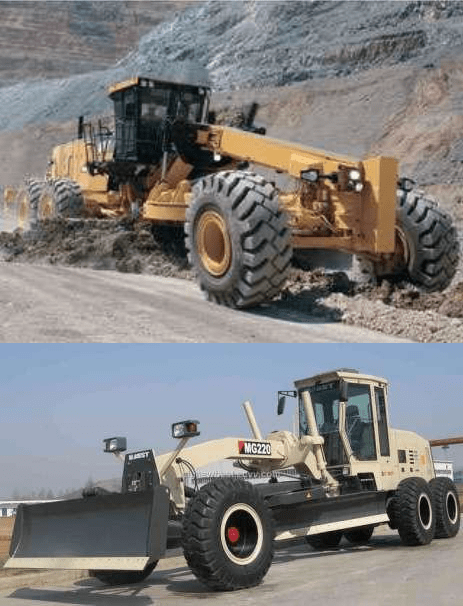
A4 :GRADERS
In civil engineering, the grader’s purpose is to “finish grade” (refine, set precisely) the “rough grading” performed by heavy equipment or engineering
vehicles such as bulldozers. scrapers and Graders are commonly used in the construction and maintenance of dirt roads and gravel roads.
In the construction of paved roads they are used to prepare the base course to create a wide flat surface for the asphalt to be placed on..
A5 :CRAWLER LOADERS
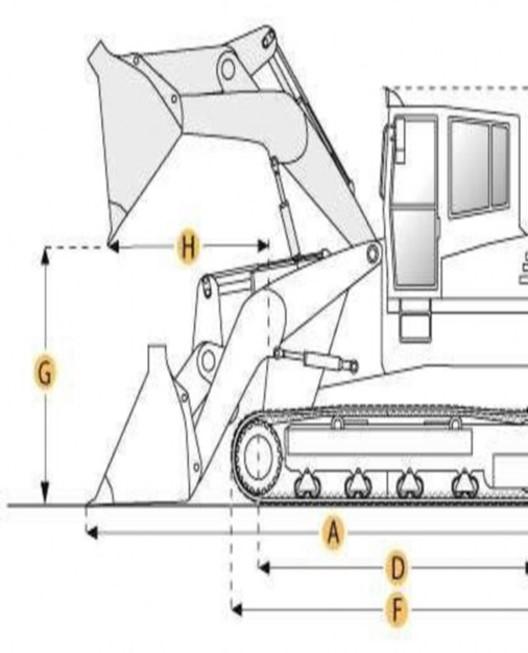
 The crawler loader combines the stability of the crawler tractor with the abilities of a wheel loader.
The crawler loader combines the stability of the crawler tractor with the abilities of a wheel loader.
 However, to construct a reliable crawler loader it
However, to construct a reliable crawler loader it
requires more than simply attaching a loader bucket onto a crawler tractor. It must be designed with its specific purpose in mind to ensure it has the strength to withstand heavy excavating.
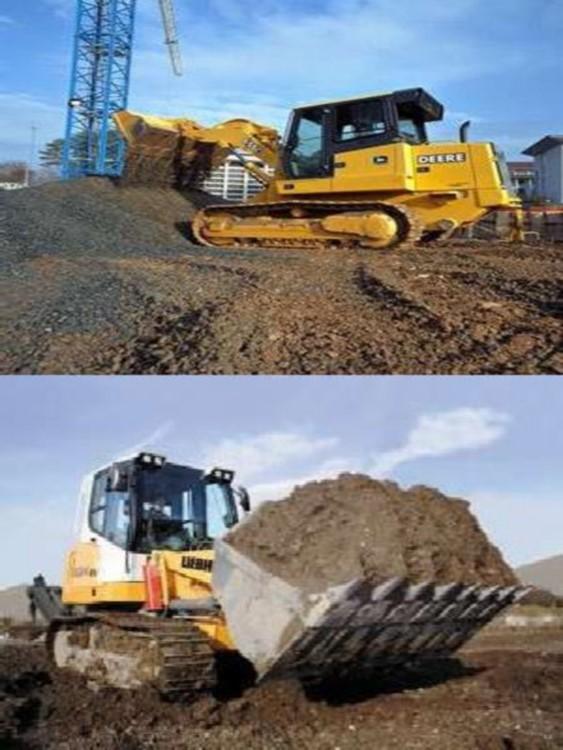
A5 :CRAWLER LOADERS
The introduction of hydraulic
excavators diminished market for the crawler
the loader because it was unable to match the excavator’s lifting power and flexibility.
However, crawler loaders are capable of maneuvering across the entire construction site under its own power, whereas
most require hydraulic towing or excavators transport.

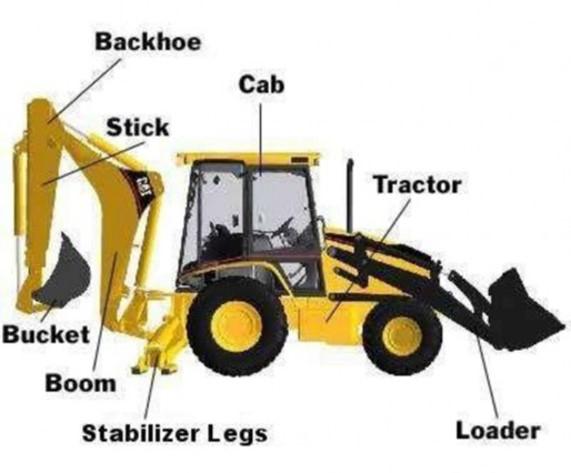
A backhoe, also called a rear actor or back actor, is a piece of excavating equipment or digger consisting of a digging bucket on the end of a two- part articulated arm. They are typically mounted on the back of a tractor or front loader.
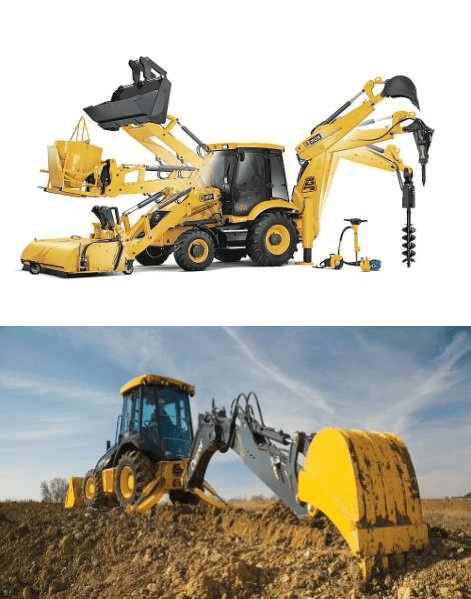
The section of the arm closest to the vehicle is known as the boom, and the section which carries the bucket is known as the dipper or dipper stick
The boom is attached to the vehicle through a pivot known as the kingpost, which allows the arm to slew left and right, usually through a total of around 200 degrees. Modern backhoes are powered by hydraulics.
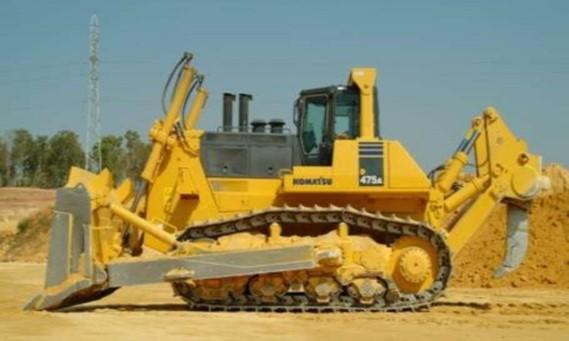
A7 :BULLDOZERS
A bulldozer is a crawler (continuous tracked tractor) equipped with a
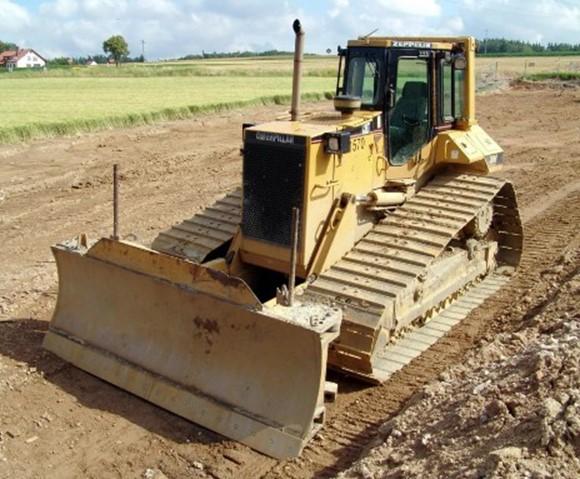
substantial metal plate (known as a blade) used to pushlarge
quantities of soil, sand, rubble, or other such material during construction or conversion work and typically equipped at the rear with a claw-like device (known as a ripper) to loosen densely-compacted

Trenchers, or ditchers as they are sometimes called, are similar to excavators in the sense that they penetrate the earth, breaking soil and rock, and remove it from the ground. They differ from excavators in that the soil is removed in one continuous movement. Trenchers are specifically used for digging trenches for pipes, but other machines have been improvised in the past to
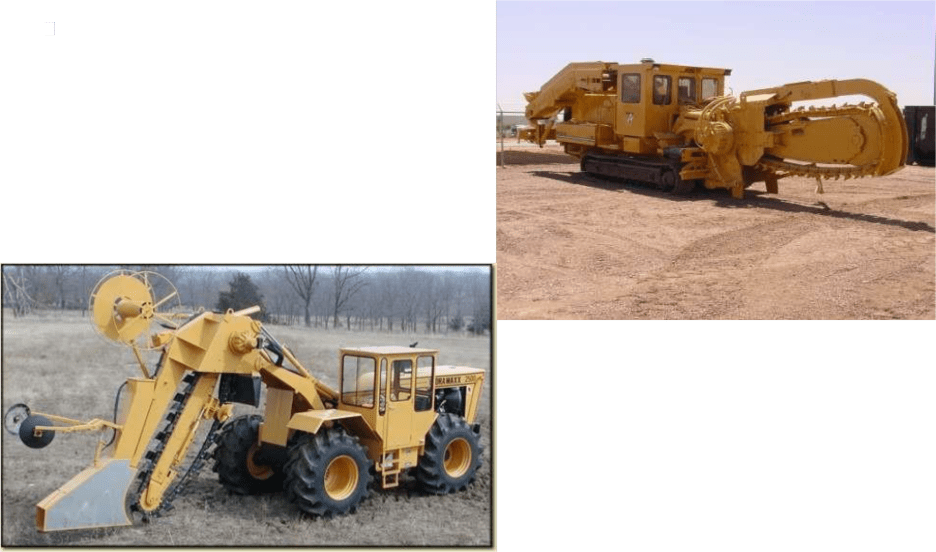
Trenchers can come in two types: ladder trenchers and wheel trenchers, and can dig trenches at speeds that other machines cannot compare to.
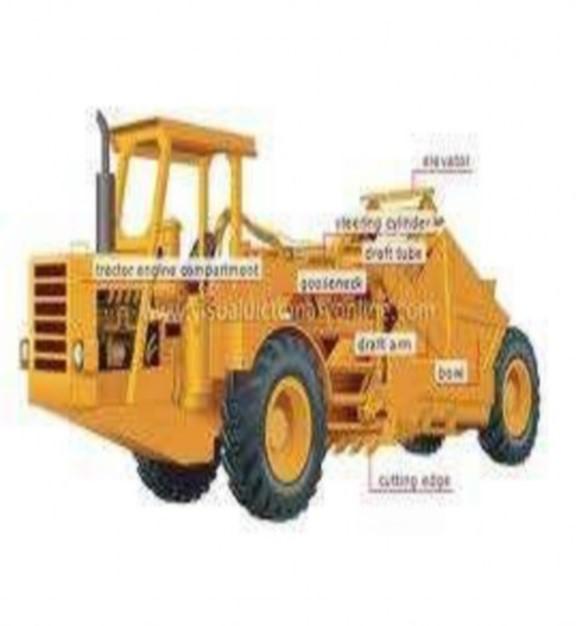
 In civil engineering, a wheel tractor-scraper is a piece of heavy equipment used for earthmoving.
In civil engineering, a wheel tractor-scraper is a piece of heavy equipment used for earthmoving.
 The rear part has a vertically moveable hopper (also known as the bowl) with a sharp horizontal front edge. The hopper can be hydraulically lowered and raised. When the hopper is lowered, the front edge cuts into the soil or clay like a plane and fills the hopper.
The rear part has a vertically moveable hopper (also known as the bowl) with a sharp horizontal front edge. The hopper can be hydraulically lowered and raised. When the hopper is lowered, the front edge cuts into the soil or clay like a plane and fills the hopper.
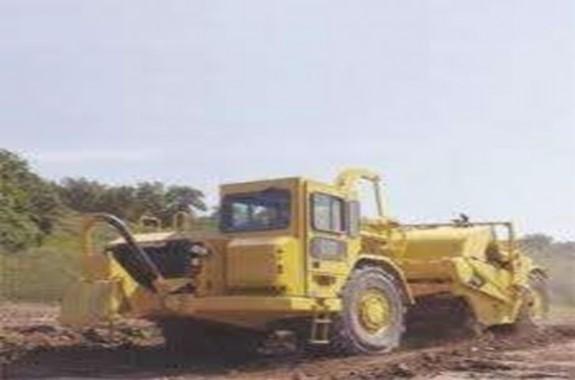
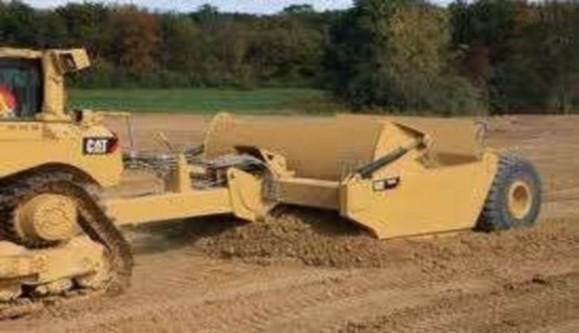
When the hopper is full it is raised, and closed with a vertical blade (known as the apron). The scraper can transport its load to the fill area where the blade is raised, the back panel of the hopper, or the ejector, is hydraulically pushed forward and the load tumbles out. Then the empty scraper returns to the cut site and repeats the cycle.
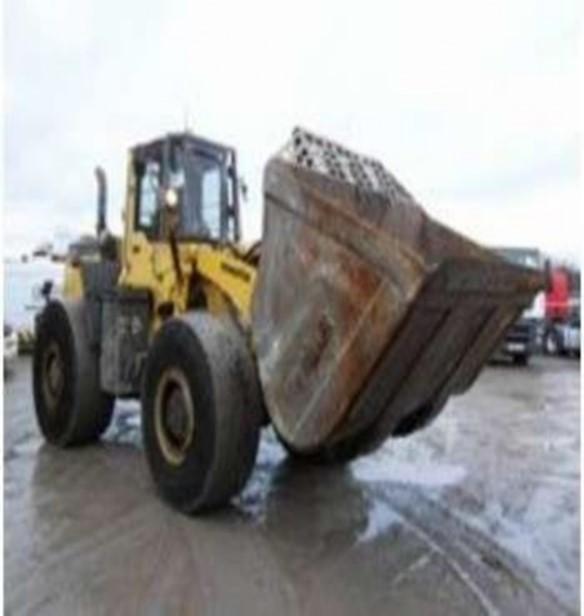
-
A power shovel (also stripping shovel or front shovel or electric mining shovel) is a bucket- equipped machine, usually electrically powered, used for digging and loading earth or fragmented rock and for mineral extraction.
-
Power shovels are used principally for excavation and removal of overburden in open- cut mining operations, though it may include loading of minerals, such as coal. They are the modern equivalent of steam shovels, and operate in a similar fashion.
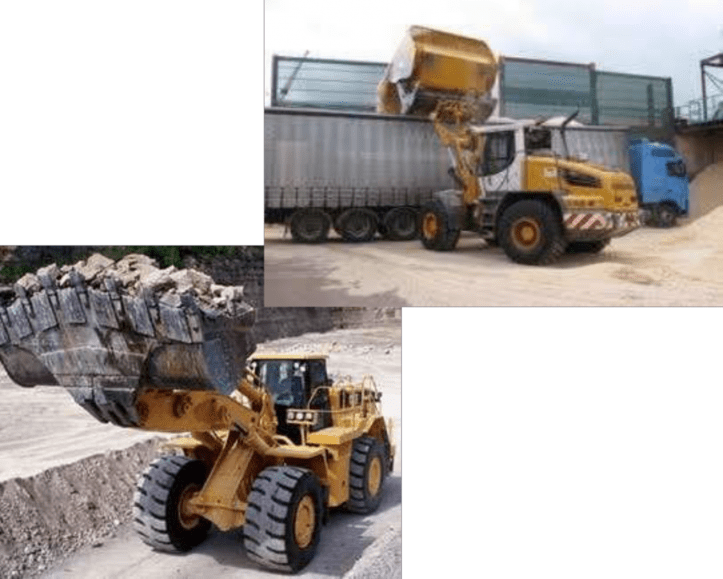
A shovel’s work cycle, or digging cycle, consists of four phases:
 digging
digging  swinging
swinging  dumping
dumping  returning
returning
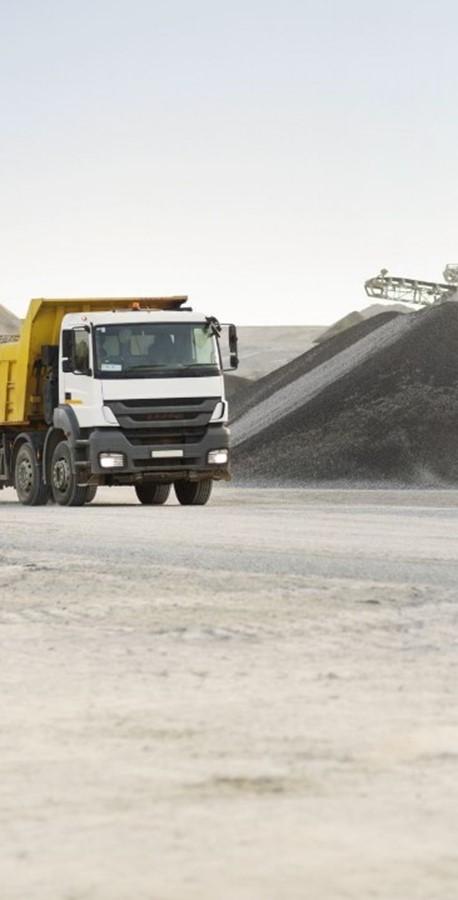
CONSTRUCTION VEHICLES
Engineering or Construction vehicles are heavy-duty vehicles, specially designed for executing construction (Civil engineering) tasks, most frequently, ones involving earth moving.
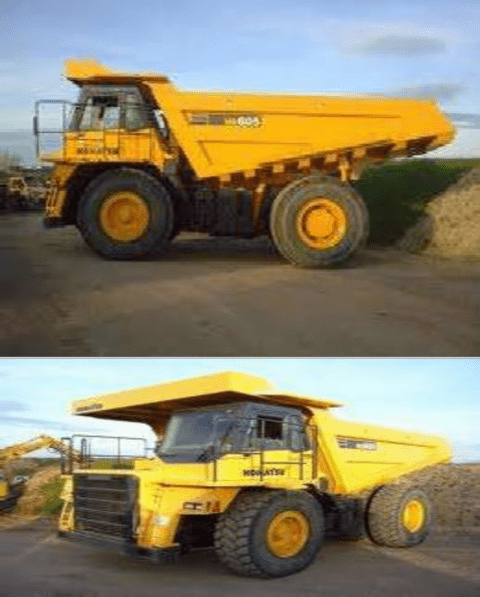
 A dumper is a vehicle designed for carrying bulk material, often on building sites. Dumpers are distinguished from dump trucks by configuration: a dumper is usually an open 4-wheeled vehicle with the load skip in front of the driver, while a dump truck has its cab in front of the load.
A dumper is a vehicle designed for carrying bulk material, often on building sites. Dumpers are distinguished from dump trucks by configuration: a dumper is usually an open 4-wheeled vehicle with the load skip in front of the driver, while a dump truck has its cab in front of the load.
The skip can tip to dump the load; this is where the name “dumper” from. They are
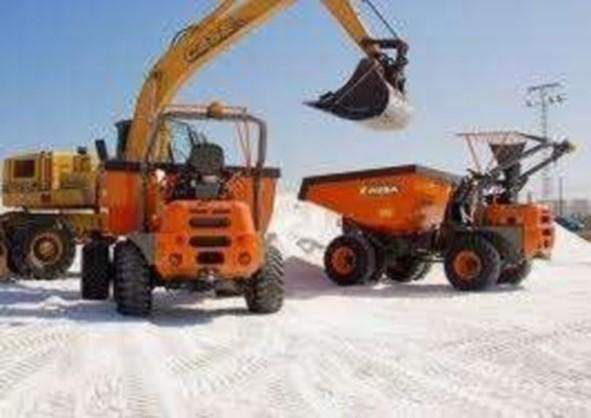
comes normally diesel powered. A towing eye is fitted use foars
a sescitoend tarrayctor. Modern dumpers have payloads of up to 10 tones and usually steer by articulating at the middle of the chassis
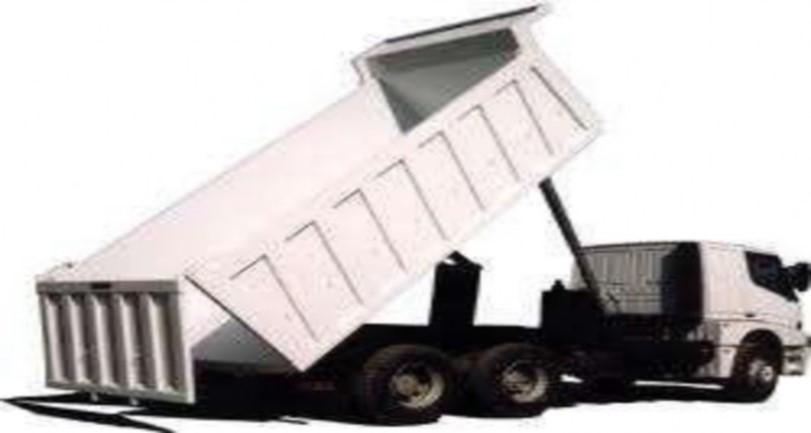
 A truck or lorry the rear platform of which can be raised at the front end to enable the load to be discharged by gravity also called tip truck.
A truck or lorry the rear platform of which can be raised at the front end to enable the load to be discharged by gravity also called tip truck.

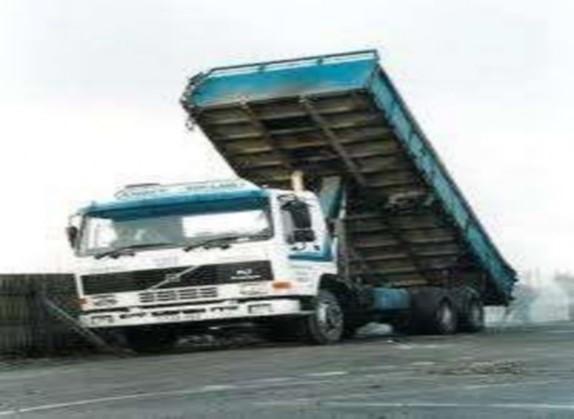
 Tippers are suited for the rough and tumble of mining & quarrying operations, as well as for carrying bulk loads in construction and infrastructure industries. Complete maneuverability, high performance and long-term endurance are common to all trucks,
Tippers are suited for the rough and tumble of mining & quarrying operations, as well as for carrying bulk loads in construction and infrastructure industries. Complete maneuverability, high performance and long-term endurance are common to all trucks,
resulting in lower operating costs.
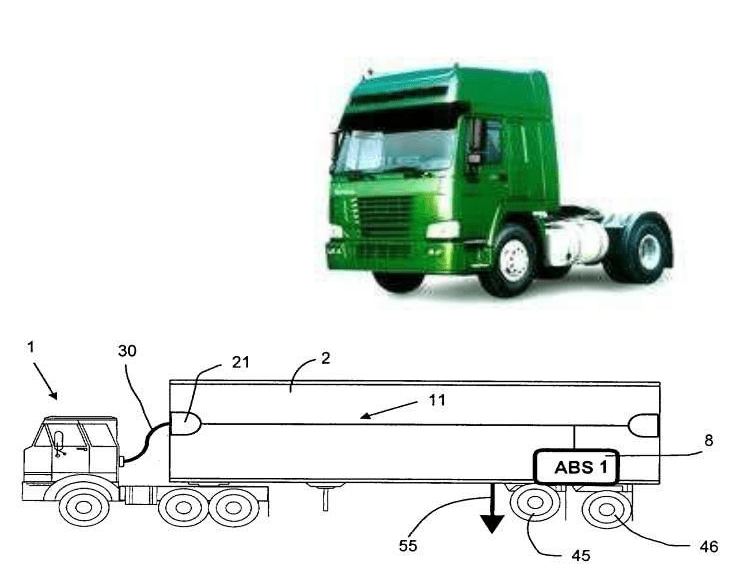
 A trailer is generally an unpowered vehicle pulled by a powered vehicle.
A trailer is generally an unpowered vehicle pulled by a powered vehicle.
| refers | to | such vehicles |
| used | for | transport of |
Commonly, the term trailer goods and materials.







